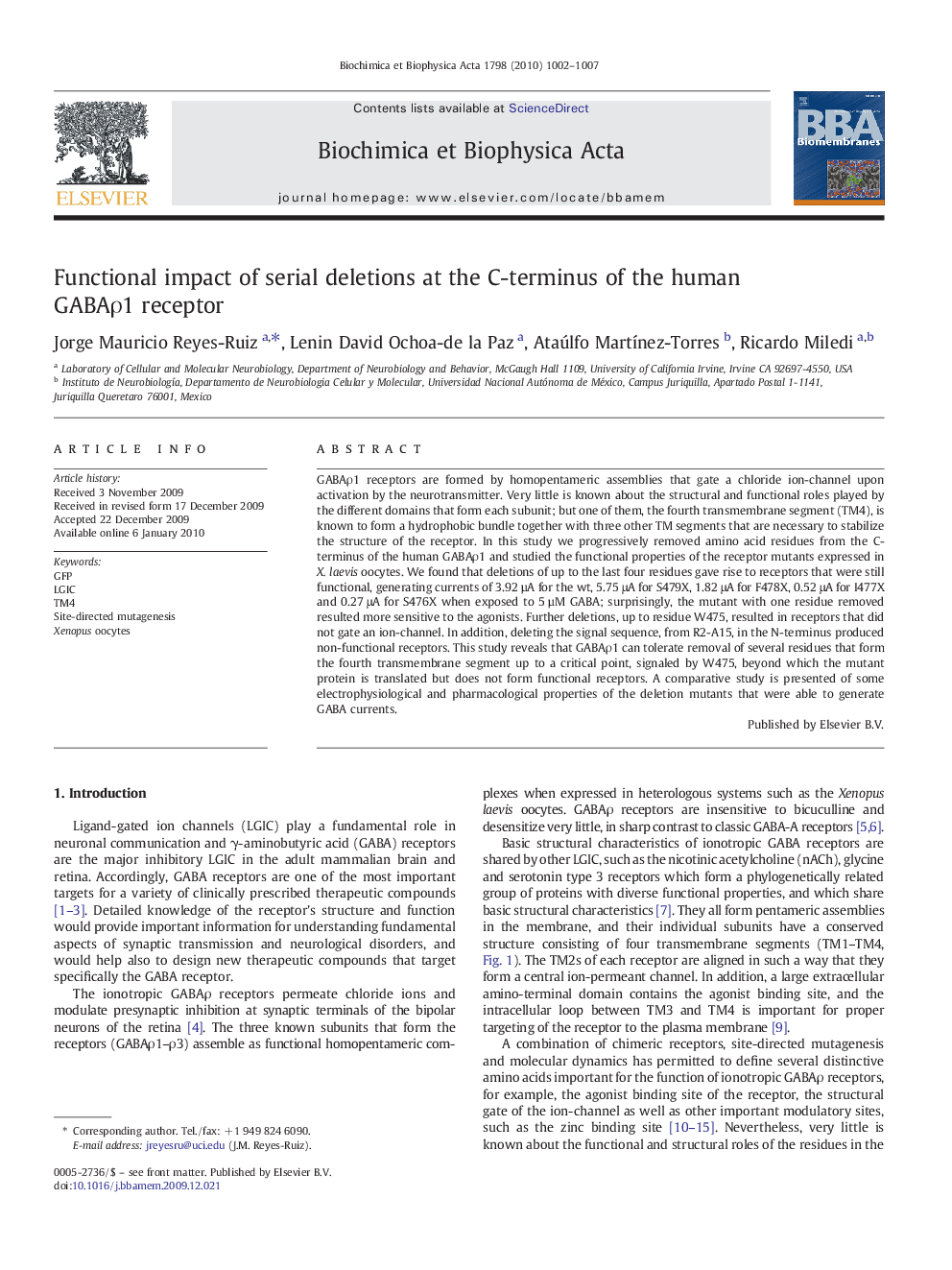| Article ID | Journal | Published Year | Pages | File Type |
|---|---|---|---|---|
| 1944907 | Biochimica et Biophysica Acta (BBA) - Biomembranes | 2010 | 6 Pages |
GABAρ1 receptors are formed by homopentameric assemblies that gate a chloride ion-channel upon activation by the neurotransmitter. Very little is known about the structural and functional roles played by the different domains that form each subunit; but one of them, the fourth transmembrane segment (TM4), is known to form a hydrophobic bundle together with three other TM segments that are necessary to stabilize the structure of the receptor. In this study we progressively removed amino acid residues from the C-terminus of the human GABAρ1 and studied the functional properties of the receptor mutants expressed in X. laevis oocytes. We found that deletions of up to the last four residues gave rise to receptors that were still functional, generating currents of 3.92 µA for the wt, 5.75 μA for S479X, 1.82 μA for F478X, 0.52 μA for I477X and 0.27 μA for S476X when exposed to 5 µM GABA; surprisingly, the mutant with one residue removed resulted more sensitive to the agonists. Further deletions, up to residue W475, resulted in receptors that did not gate an ion-channel. In addition, deleting the signal sequence, from R2-A15, in the N-terminus produced non-functional receptors. This study reveals that GABAρ1 can tolerate removal of several residues that form the fourth transmembrane segment up to a critical point, signaled by W475, beyond which the mutant protein is translated but does not form functional receptors. A comparative study is presented of some electrophysiological and pharmacological properties of the deletion mutants that were able to generate GABA currents.
